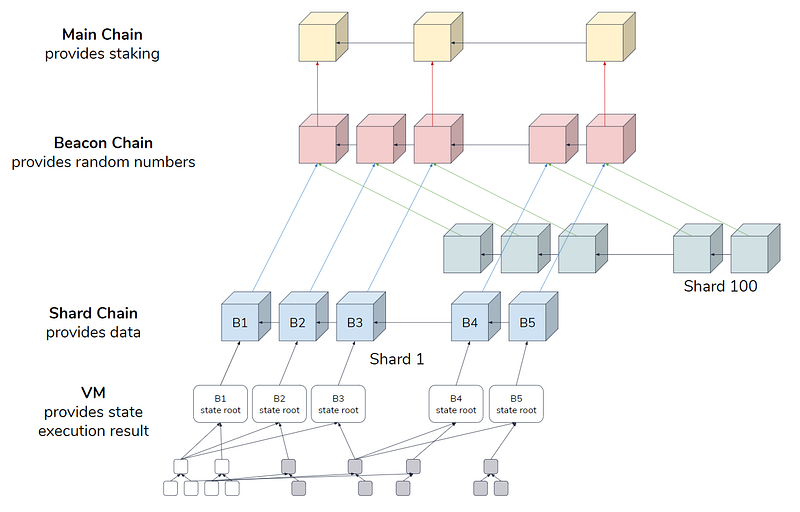Beacon chain — how it will change blockchain technology?
While reading ethereum 2.0 roadmap, I was surprised with a solution which was adapted and improved entire ecosystem by increasing…


While reading ethereum 2.0 roadmap, I was surprised with a solution which was adapted and improved entire ecosystem by increasing transactions per second rate and also security. It was achieved by shard chains and beacon chain.
While reading ethereum 2.0 roadmap, I was surprised with a solution which was adapted and improved entire ecosystem by increasing transactions per second rate and also security. It was achieved by shard chains and beacon chain.
Agenda:
- Intro,
- Definition,
- How it works,
- Conclusion.
Definition
Beacon chain is actually run side by side of ethereum mainnet and it mainly handle the disposal of validators per shard chain, due to proof of stake consensus model.
More about proof of stake you will find there:
Beacon chain does not valid transactions or add it to the mainnet, it’s role is limited to managing validators.
Beacon chain was run in December 2020 and works side by side of original ethereum mainnet, not affecting on it.
How it works
As it was mentioned before, beacon chain coordinates the validators in the network. Easily said, to the ethereum mainnet are added shard chains, which increase capacity. Validators to this chains are added randomly by beacon chain.
More about shard chains, you can find there:
https://twitter.com/kacperhernacki/status/1555528796832501761?s=21
As it was introduced in above material, shard chains validate transactions only in their chain, not in entire ecosystem. It limits amount of data needed to store by nodes and increases transactions per second rate.
Beacon chain controls validators, for example:
Entire network has 6400 validators and there are 64 chains, 63 shard chain and the ethereum mainnet. Beacon chain choose randomly 100 validators per chain to validate transactions. Sounds brilliant, isn’t it?
As each shard chain has own validated blocks and is adding them to the chain. Finally it is needed to join them into ethereum mainnet. Otherwise it would not make any sense.
Beacon also controls the process of joining shard blocks to the mainnet, like it is shown in the picture below:
It is worth to mention that consensus model is still the same, proof of stake is used for every validation process.
Conclusion
Beacon chain with shard chains are the essential part of new version of ethereum 2.0. It gives so much opportunities to scale decentralized applications, increased transactions per second rate and security can give a chance to build incredible technologies.
However, there are also fears about this complex system. On the paper it looks like it does not have disadvantages, but real world will validate it and check from every perspective.




